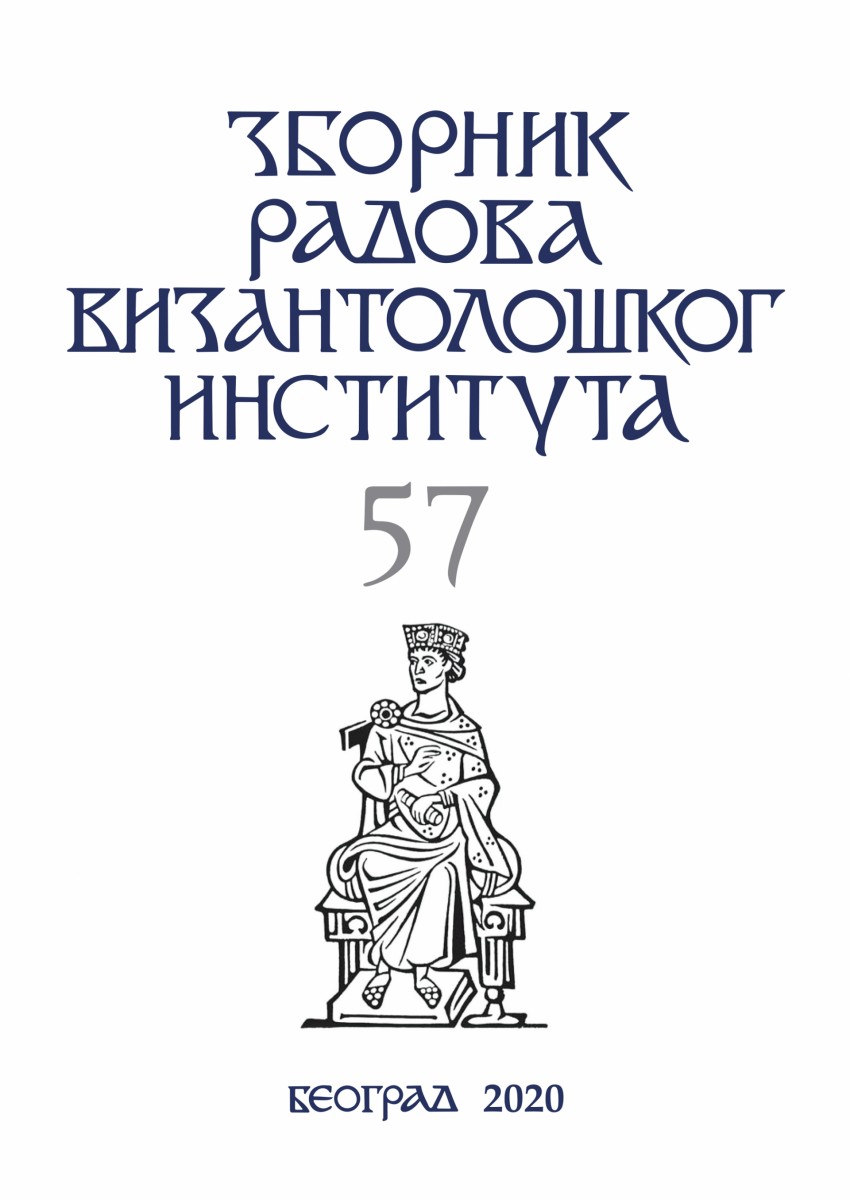ÜBER DAS VERHÄLTNIS VON HERRSCHERTITELN UND RÄUMEN: EINE FALLSTUDIE ZU MAKEDONIEN UNTER DEM KÖNIG UND ZAREN STEFAN DUŠAN (1331–1355)
ON THE RELATIONSHIP BETWEEN TITLES AND SPACES: A CASE STUDY ON MACEDONIA UNDER THE KING AND TSAR STEFAN DUŠAN (1331–1355)
Author(s): Mihailo Popović, Vratislav Zervan, Toni FiliposkiSubject(s): 13th to 14th Centuries
Published by: Vizantološki institut SANU
Keywords: Byzantine Oecumene; Roman; Greek and Byzantine Literature; Serbian Medieval History; Serbian Medieval Charters; Historical Geography; Toponymy; Byzantine Macedonia
Summary/Abstract: The article focuses on historical-geographical aspects of the Serbian medieval Kingdom and Empire and its relation to Byzantium in Macedonia during the 14th century. It is structured in four parts: The first is an introduction to the subject, in which the possible existence of a medieval Serbian Oecumene in addition to the Byzantine Oecumene is addressed. After that this hypothesis is discussed in detail in the second part by introducing a rich variety of Greek, Roman and Byzantine texts, which are outlining the Roman / Byzantine perception of space and definition of the borders of the Roman / Byzantine Empire. In the third part of the article the titles and related geographical entities in the intitulations as well as signatures of the Serbian King and Emperor Stefan Uroš IV Dušan (1331–1355) in Serbian charters are analysed in order to understand and reconstruct the perception of space in the expanding Serbian realm during the first half of the 14th century. Historical regions, which are mentioned in the charters, are put in relation to the expansion in Byzantine Macedonia. In the fourth and last part the source-based evidence is connected to the toponymy of Byzantine Macedonia. Toponyms, which are containing “Car” (i.e. “Emperor”), have been identified and localised in order to discern a pattern of imperial power and presence in the region. Although there are strong indications that some of them might refer to the Serbian Emperor Stefan Dušan, it cannot be excluded that many could be based on the presence of Byzantine Emperors and Bulgarian rulers in the region. Therefore, the fourth part is to be understood as a fresh and novel approach towards toponomastic aspects in the region, which shall stimulate further research in the near future.
Journal: Зборник радова Византолошког института
- Issue Year: 2020
- Issue No: 57
- Page Range: 61-102
- Page Count: 42
- Language: German

